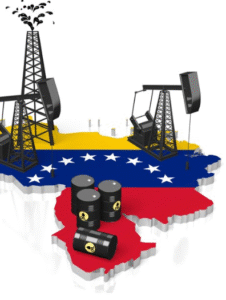$USO $OIL $BNO
#OilPrices #CrudeOil #BrentCrude #WTI #TariffWar #USChinaTrade #EnergyMarkets #OPEC #CommoditiesTrading #MarketVolatility #Investing #GlobalEconomy
Crude oil prices experienced another day of decline, accentuating the unease pervading the market as it grapples with ongoing demand concerns and the broader implications of the escalating tariff war between the United States and China. As of the latest reports, Brent crude has been observed trading at $65.41 per barrel, slipping from its opening position, with its American counterpart, West Texas Intermediate (WTI), not faring much better at $61.63 per barrel. This marks a sustained downtrend, fueled by apprehensions over the demand trajectory for oil in light of these geopolitical uncertainties.
The clash of titans, with the U.S. and China at the forefront, has caused more than just ripples across international waters. Notably, the energy sector has felt the brunt of this confrontation, following China’s imposition of retaliatory tariffs on imports of U.S. crude oil and natural gas. This tactical move by China in the tit-for-tat trade war not only underscores the tensions between the two largest global economies but also highlights the vulnerability of energy trade dynamics to geopolitical shifts. Furthermore, the discussions and decisions within the Organization of the Petroleum Exporting Countries and their allies, collectively known as OPEC+, add another layer of complexity and uncertainty for traders, who closely monitor the group’s stance on oil production and pricing policies.
The implications of these multifaceted geopolitical and economic dynamics are profound for the global economic landscape. On one hand, prolonged conflicts and tariffs could significantly dampen economic activity, thereby reducing demand for crude oil among the world’s largest consumers and importers. On the other, OPEC+’s strategic production adjustments in response to market conditions could either exacerbate or mitigate the impact of these trade tensions. These developments are closely watched by investors, market analysts, and policymakers alike, as they navigate through these turbulent waters, attempting to forecast future market movements and align their strategies accordingly.
As the market continues to grapple with these uncertainties, the trajectory of oil prices remains a subject of intense speculation and debate. With variables such as U.S.-China relations, OPEC+’s policy decisions, and the global economic recovery from the pandemic in play, the only certainty is volatility. Traders and investors are advised to remain vigilant, keeping an eye on unfolding geopolitical events, energy market shifts, and macroeconomic indicators that could influence oil supply and demand dynamics. As the situation evolves, understanding the intricate interplay between these elements will be crucial for those looking to navigate the oil markets successfully.











Comments are closed.